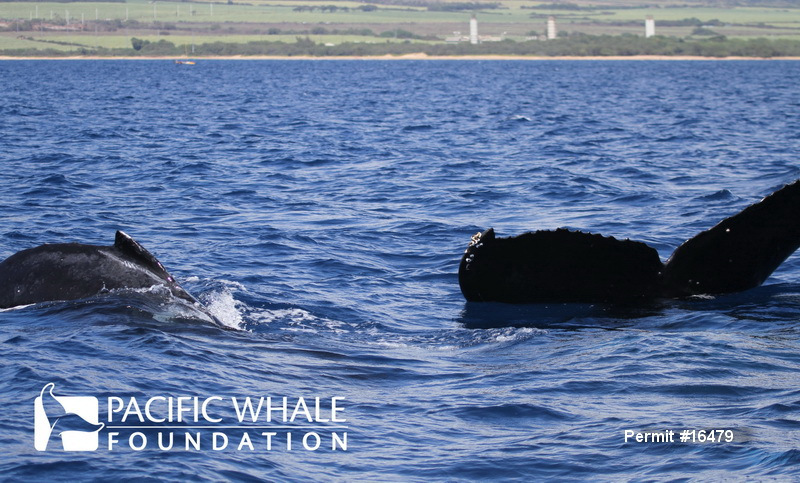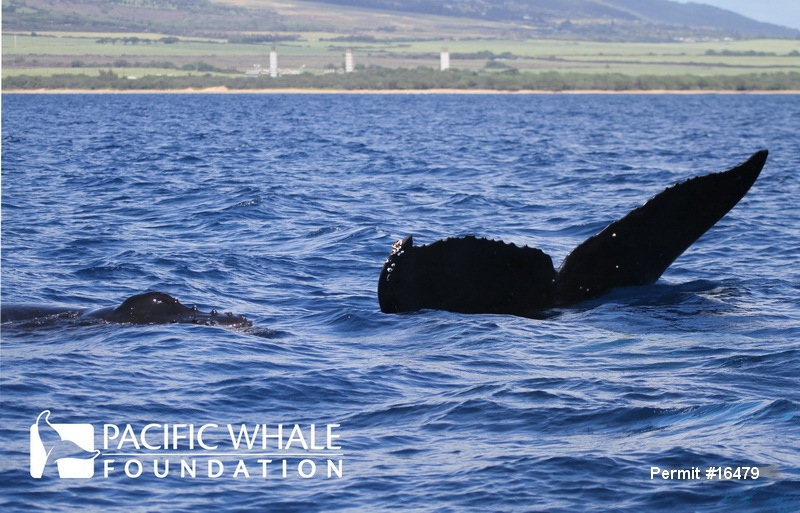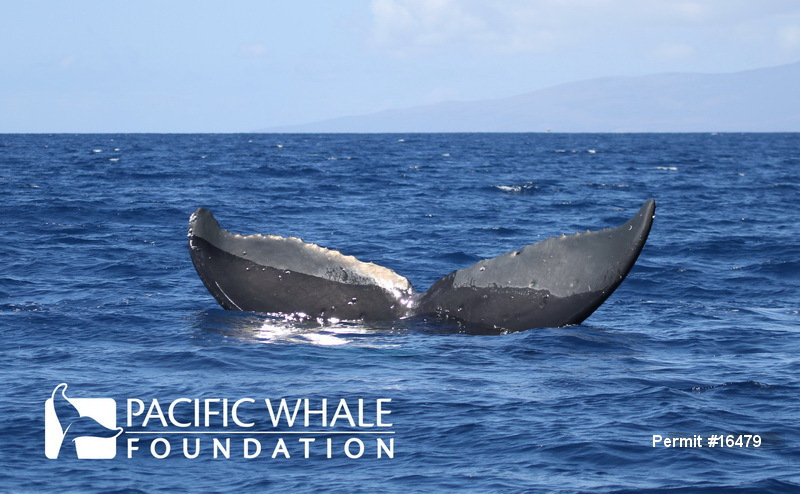In the past few weeks our office has received numerous calls from concerned citizens about seeing a whale in distress. The whale observed is spending long periods of time at the surface with its flukes extended above the water’s surface. Some have conjectured that it is a whale using its tail flukes to sail; others have suggested it is attempting to cool down using its tail as a thermoregulatory device.
We believe a different hypothesis to be true. The whale with the extended flukes is most likely a female humpback with a newborn calf. The mother is resting while still allowing her calf access to her mammary glands (located near the posterior portion of her body some 6-8 feet from her flukes). By extending her tail into the air she is able to keep her body relatively close to the surface, allowing her to rest while minimizing dive depths for her young calf. The calf is then able to nurse at will and expend less energy.
While it is rare to see a female displaying this resting/nursing posture in Hawaii, it is not without precedent. PWF researchers have observed this feeding behavior in over three dozen female humpback whales off east Australia since 1984. It appears to be a socially transmitted behavior: initially just a few whales employed this resting and feeding posture, and over the past 20 years we have seen a steady increase of females displaying this behavior. We refer to it as “fluke-up feeding”, or “tail-up feeding”, and once an animal employs this method, they then tend to repeat the behavior with subsequent calves.
The gestation period for humpback whales is between 10 and 12 months, and they have only one calf at a time. A whale has never been seen with two live young, but there are records from the whaling days of a pregnant whale with two fetuses. Humpback whale calves observed in Hawaii are both conceived and born in the Hawaii region. Surprisingly, there is little firsthand evidence of birthing. Scientists have observed newborn calves with their dorsal fin still folded flat against the back and fetal folds along the body. There have also been reports of a placenta being recovered while floating at the surface of the water.
A recent finding by Murdoch University Cetacean Research Unit in West Australia reveals nursing occurs at an average depth of 16 feet. Most calves nurse throughout the day, and spend 30% of their time nursing in a 24-hour period. Although most calves nurse opportunistically throughout the day, some females only nurse their calves during the morning hours, and others nurse only at night. Humpback whales have two nipples which, when nursing, will protrude through the mammary slit. To nurse, the calf curls a specially shaped tongue around the nipple and the thick, fatty milk is reflexively squirted into the calf’s mouth. Humpback whale calves drink many gallons of milk per day, which allows them to grow quickly. Newborn humpback whales average 12-14 feet in length and weigh upward of two tons. Lactation continues for 10-11 months and once the calf has weaned, it has little contact with its mother.
There is no need to be alarmed at the sight of a whale with its tail extended for long periods of time: the animal is neither injured nor in harm’s way. In this case it is a mother who has figured out a novel way to feed her calf while resting and conserving her energetic resources for the long journey back to the northern feeding grounds.





